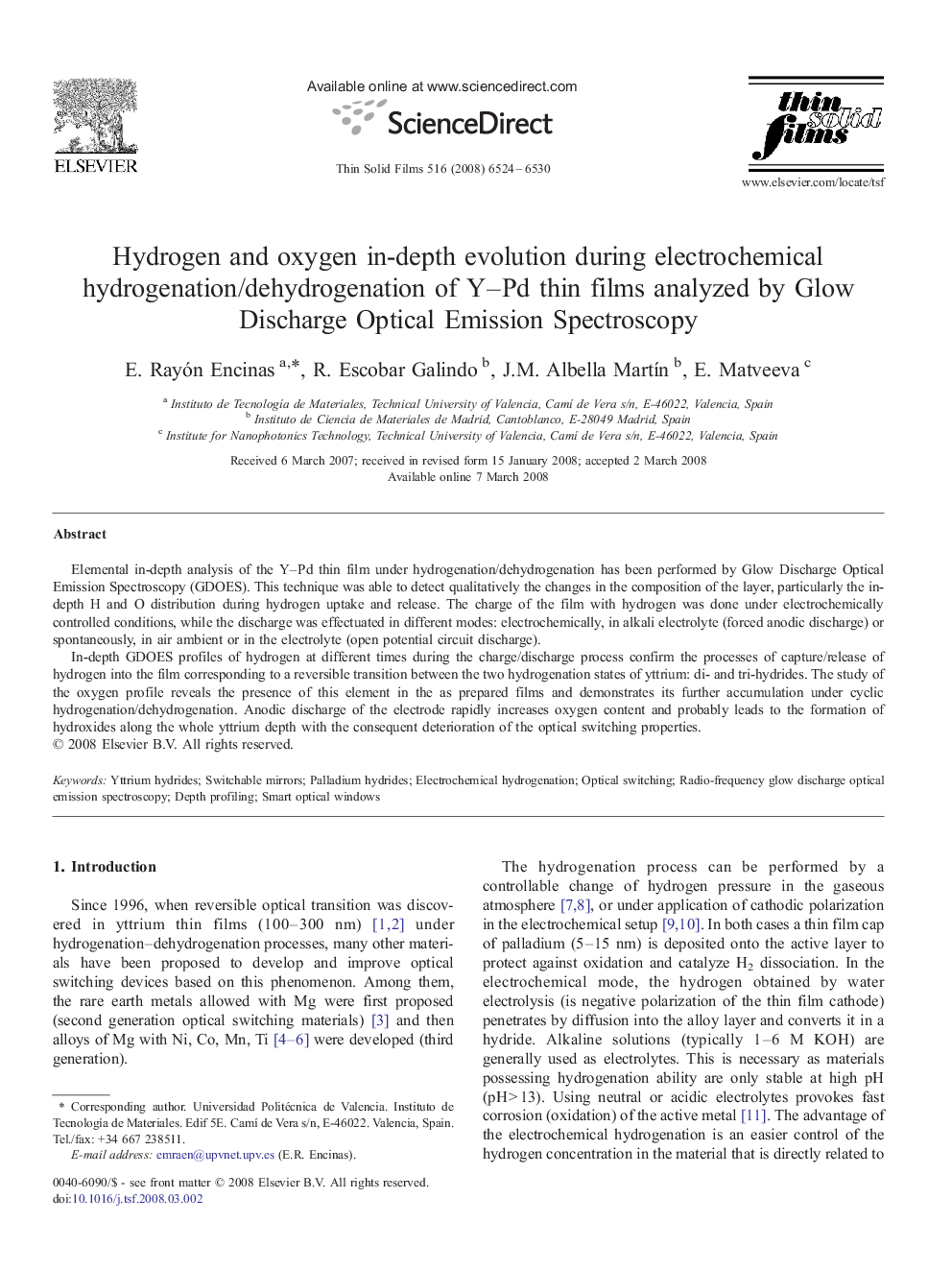| Article ID | Journal | Published Year | Pages | File Type |
|---|---|---|---|---|
| 1672459 | Thin Solid Films | 2008 | 7 Pages |
Elemental in-depth analysis of the Y–Pd thin film under hydrogenation/dehydrogenation has been performed by Glow Discharge Optical Emission Spectroscopy (GDOES). This technique was able to detect qualitatively the changes in the composition of the layer, particularly the in-depth H and O distribution during hydrogen uptake and release. The charge of the film with hydrogen was done under electrochemically controlled conditions, while the discharge was effectuated in different modes: electrochemically, in alkali electrolyte (forced anodic discharge) or spontaneously, in air ambient or in the electrolyte (open potential circuit discharge).In-depth GDOES profiles of hydrogen at different times during the charge/discharge process confirm the processes of capture/release of hydrogen into the film corresponding to a reversible transition between the two hydrogenation states of yttrium: di- and tri-hydrides. The study of the oxygen profile reveals the presence of this element in the as prepared films and demonstrates its further accumulation under cyclic hydrogenation/dehydrogenation. Anodic discharge of the electrode rapidly increases oxygen content and probably leads to the formation of hydroxides along the whole yttrium depth with the consequent deterioration of the optical switching properties.
